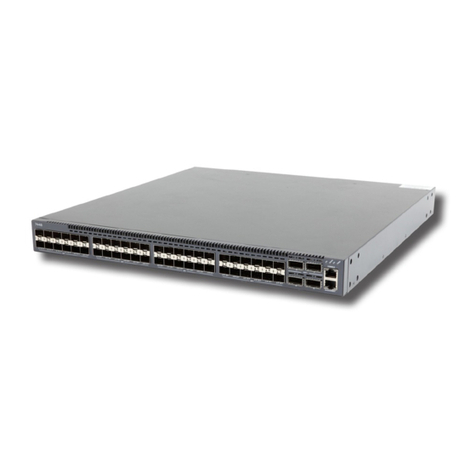
iii
Warning: Fiber Optic Port Safety
When using a ber optic port, never look at the transmit laser while it is powered
on. Also, never look directly at the ber TX port and ber cable ends when they are
powered on.
Avertissement : Consignes de sécurité concernant le port de fibre optique
Ne regardez jamais le faisceau de laser émis activé lorsque vous utilisez un port de
bre optique. Également, ne regardez jamais le port de bre TX et les extrémités du
câble du bre directement lorsqu’ils sont activés.
CAUTION
Lithium Battery Caution
Danger of explosion if battery is incorrectly replaced. Replace only with same or equivalent type.
Dispose batteries according to manufacturer’s instructions.
Disposal of a BATTERY into re or a hot oven, or mechanically crushing or cutting of a BATTERY, that
can result in an EXPLOSION.
Leaving a BATTERY in an extremely high temperature surrounding environment that can result in an
EXPLOSION or the leakage of ammable liquid or gas.
A BATTERY subjected to extremely low air pressure that may result in an EXPLOSION or the leakage
of ammable liquid or gas.
Grounding Caution
This equipment must be grounded and the power cord for product should be connected to a socket-
outlet with earthing connection.
MISE EN GARDE
Mise en garde concernant la pile au lithium
Risque d’explosion si la pile est remplacée incorrectement. Remplacez-la avec une pile semblable ou
de même type uniquement. Éliminez les piles selon les directives du fabricant.
L’élimination de la PILE dans un feu, un four chaud ou un broyeur mécanique peut provoquer une
EXPLOSION.
L’exposition de la PILE à une température ambiante extrêmement élevée peut provoquer une
EXPLOSION ou la fuite d’un liquide ou d’un gaz inammable.
L’exposition de la PILE à une pression atmosphérique extrêmement basse peut provoquer une
EXPLOSION ou la fuite d’un liquide ou d’un gaz inammable.
Mise en garde concernant la mise en terre
Cet équipement doit être mis à terre et le cordon d’alimentation du produit doit être branché à une
prise mise à terre.






























